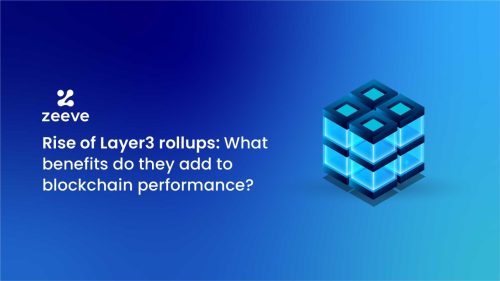
Rise of Layer3 rollups: What benefits do they add to blockchain performance?
Lately, we are seeing a lot of buzz in the Web 3 space revolving around L3s. However, one thing that is intriguing to note is that if L2s provide scalability to the Dapps, in that case, why is the space talking about L3s? In this piece, we shall find out why. But, before we do that, let’s first jump into;
What are L3 Rollup Chains?
L3 rollup chains are the third layer of the blockchains built on top of L2s and L1s, providing absolute scalability to their applications without diluting their app-specific customizability like interoperability by triggering the same from a single application. As a result, they not only provide a scalability add-on for Dapps, which we shall see in the later part of this piece, but an even better user experience, which is a necessity for providing the same level interface as Web 2 to onboard the next billion users to the Web 3 space.
How Do Layer 3 Rollup Chains Work?
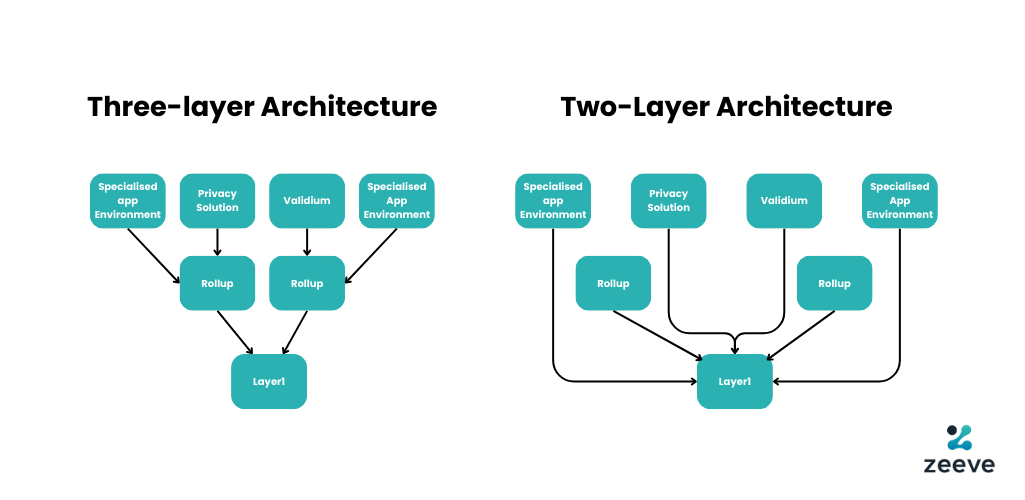
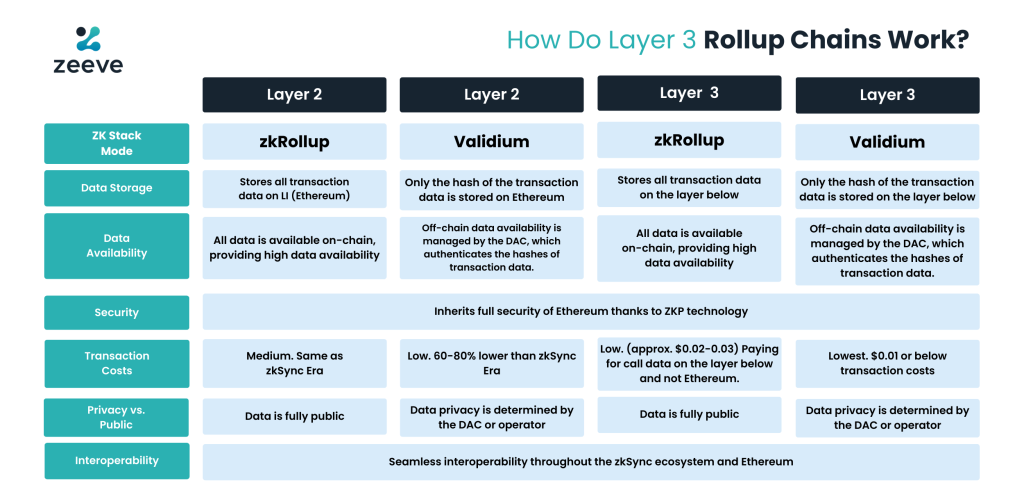
Layer 3s work as a nexus layer for the Dapp to bridge between L1 and L2, where they use the L2 as a settlement environment while inheriting the security of the base layer/ L1 through L2. In this way, they optimize interoperability across all the interconnecting blockchains and use them for performing specific tasks, while controlling all the executions in their own environment. How do they do that? They overcome the problem of generalized scaling of L2 through custom scaling on L3 by eliminating the need to share Zk-circuits with other applications.
Moreover, their architecture has been designed in such a way that they can avoid posting compressed data on L1, rather, use off-chain validators through validum to secure the digital asset. Moreover, if Dapps want to use a rollup environment with an on-chain or off-chain DA layer, they can do so using Layer 3 rollup chains because they provide the ability to the Dapps to either use an on-chain DA layer of an existing layer 2 rollup state, or they can also switch to an off-chain data layer through Validium, if they wish to further optimize the transaction cost for better user experience.
Why Do We Need Them?
While the L2 chains are working as a general-purpose scaling solution, there are multiple reasons for which we need L3s.
- Interoperability
- Base Cost/Fee Challenge
- App Specific Scaling
How Does Layer 3 Rollup Chains Help Overcome the Same?
For Interoperability
On L2s, there might be different roll-up environments like Arbitrium, Optimism, and others, which are connected through a trust bridge. At the time of writing, these bridge hacks have cost the roll-up ecosystem more than $1.4 B in losses in one financial year, with the present hack costing $80M. Interledger protocols (ILPs) perform a wide range of functions predefined in a specific L3 rollup environment, solving interoperability challenges. They do that by standardizing multiple operations in a roll-up environment, from payment channels to wallet integration to others. In this way, they simply take the UX to the next level.
On L3s, ILPs help any asset be allowed to be represented as a single global ledger entry, and they can move likewise between the partner networks. There’s no need for a middleware like a bridge to help streamline operations. Likewise, the IBC protocol also does the same by standardizing the interaction through a Tendermint Core technology stack that allows very smooth interchain communication in the following manner demonstrated below.
Through these IBCs, data transfer, authentication, and ordering across multiple blockchain networks can be done because the applications can use other application’s smart contracts and data services to execute operations. The Yellow Network is a perfect example to quote for transforming the UX and interoperability in the L3 chains.
Hence, any Dapps that are deployed on top of L3s need not have to compromise their logic. Instead, they have the discretion to define their own logic and, at the same time, remain interoperable and scalable with other partner ecosystems to avoid fragmenting their liquidity.
For Base Cost
Now, one may say that in the L2 state, you can submit as many transactions as you need to L1, but there’s a limit you cannot break on the Ethereum L1 chain. For example, at no point the Ethereum Network can take more than 1 batch at a time because there’s a batch cost to pay. As a result, there’s a limit to submitting the transactions on L1s, which can abruptly increase the cost per batch submission. Hence, it is necessary to sync the confirmation time with a positive UX. In the presence of Layer 3 rollup chains, there will be 1 ZKP posted on the L2 to prove many more ZKPs on L3. Hence, the gas cost using a Layer 3 rollup chain will be reduced to ~368 from ~390 in a traditional L2 scaling solution.
For App Specific Scaling
Now, there might be specific needs that you have to cater to with respect to your application requirements. For example, if your application desires account abstraction where you can get into the smart contract and readjust the same according to your specific need. In such a case, when you are deploying on the L2 roll-up chain, you cannot do that because the L2 roll-up chain will only act as a naked scaling layer for your Dapp, and you need validation from the network for making any changes to your existing smart-contract deployed.
However, when you are deploying on top of the Layer 3 rollup chain, you can use abstracting factors using technology to define smart contract rules in a genuinely permissionless manner to perform different functions. For example, you can define a specific gas amount, session keys, wallets, and others to take the Dapp experience to the next level. It is also possible to integrate state channels in the Dapp ecosystem and optimize the smart contract to suit the specific needs of the application. Hence significantly improving the user experience.
Can We Have More Rollup Chains Like L4s and Beyond To Further Improve Scalability and UX?
No, we cannot do that because DAs simply act as an extension of the rollup environment to compress data and post the same on the subsequent upper layers. However, there’s a compression limit of the data that cannot be breached beyond a specific threshold. Hence, theoretically, going down in the layers to L4 or beyond might sound very fascinating; however, they are not practicable in reality. Even the owner of the Ethereum Network, Vitalik Buterin, has said in one of his interviews, “There’s always something in the design that’s just not stackable and can only give you a scalability boost once — limits to data availability (DAs), reliance on L1 bandwidth for emergency withdrawals, or many other issues.”
Key Players To Watch Out For In the Layer 3 Rollup Realm
Polygon CDK L3
Polygon CDK is another noteworthy mention in the Layer 3 Rollup chains infrastructure building category because it allows all the chains developed via Polygon CDK to get connected and tap into a host of advanced features like a unified block space for faster and cheaper Zk proof validation, sovereignty, and customizability in transaction costs and optimizing the data storage to trigger interoperability and tapping into Ethereum’s liquidity.
StarkWare L3
Starkware is introducing the vision of the superchain. In the superchain vision, Starkware allows customization and experimentation to occur at a fraction of the cost without the need for the Dapp developers to build on top of Ethereum. However, their applications can enjoy the same degree of security and liquidity as that of the Ethereum chain.
Arbitrium Orbit L3
Arbitrium has also spearheaded the competition by introducing the Orbit chains that allow the developers to create their own child chains that settle on Arbitrum One, Arbitrum Nova, Arbitrum Sepolia, or Arbitrum Goerli. Hence, the developers are given the advantage of customizing the throughput, privacy, gas tokens, governance, and other features.
Starknet L3
Starknet provides a permissionless interface to the Dapps so that they can achieve unlimited scalability as per their project requirements. The Starnet ecosystem allows Dapps to initiate low-cost transactions and high-performance throughput using zk-STARK cryptographic proof systems. Since StarkNet uses Cairo, Dapp developers can build their own predefined logic and scale their applications as per the project’s varying needs.
Optimism L3
Optimum is building its own one-chain thesis through the introduction of a superchain network, which shall be built on top of the Op Stack. Their vision is to merge the Optimism Main-net with other Layer 3 chains so that they can collectively bring scalable and decentralized computing to different applications in a truly decentralized and secure way. In this way, Optimism L3s aims to solve the multi-chain interconnectivity problems that are created because of the introduction of new security models and the creation of new chains.
Build your custom L3 chain with Zeeve RaaS
Whatever you need to build an L3 rollup chain, Zeeve has everything. From all the leading rollup SDKs to essential integration partners, developers, or businesses launching their OP or ZK rollups with Zeeve, get these in one place. Zeeve supports OP Stack, Arbitrum Orbit, zkSync zkStack, and Polygon CDK as choices for rollup deployments, along with 30+ integration partners and middleware for augmenting the capabilities of your rollup chain right from day 1. These include alt DA layers, sequencers, Oracles, Account Abstraction SDKs, provers, privacy and security tools, and many more. Additionally, our 1-click Sandbox tool allows you to test multiple configurations before moving to publicnet.
If you are planning to launch your own L3 rollup chain tailored to your application, connect with our expert team. We can help you decide what infrastructure might suit your needs better. Schedule a call today!



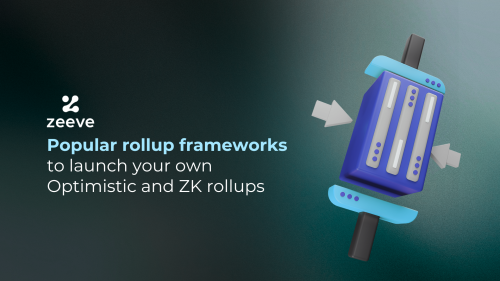
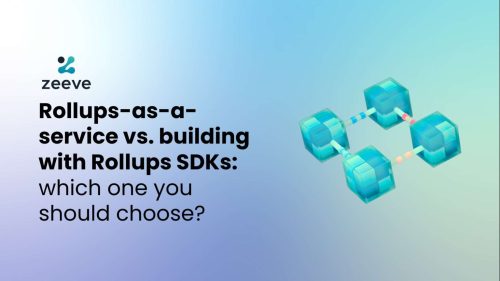
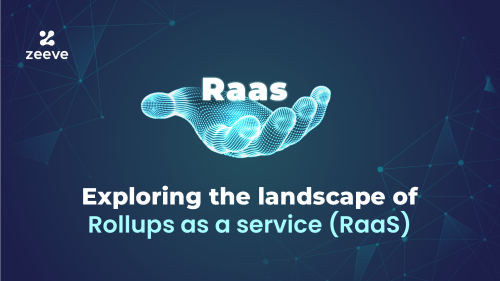
Responses